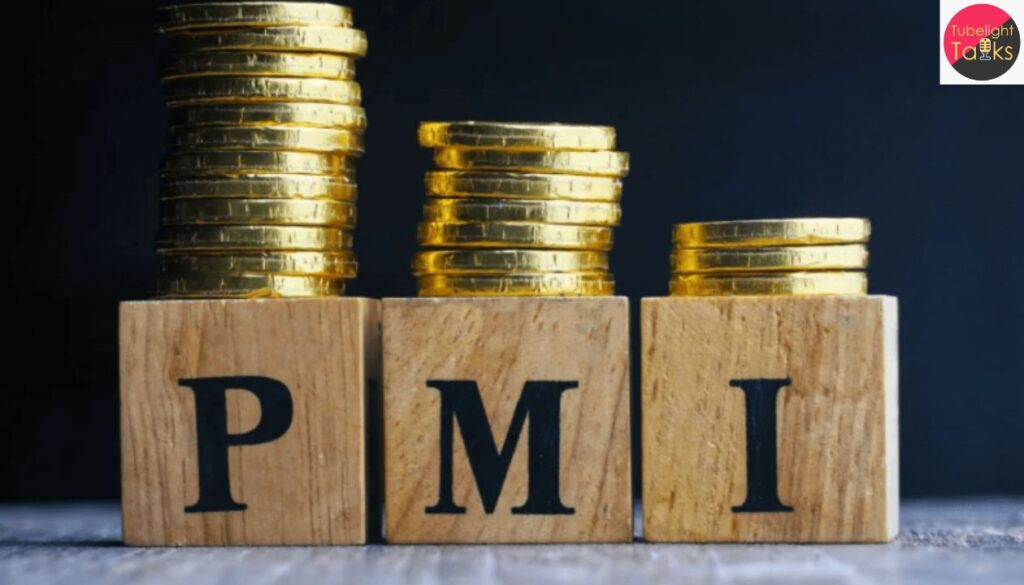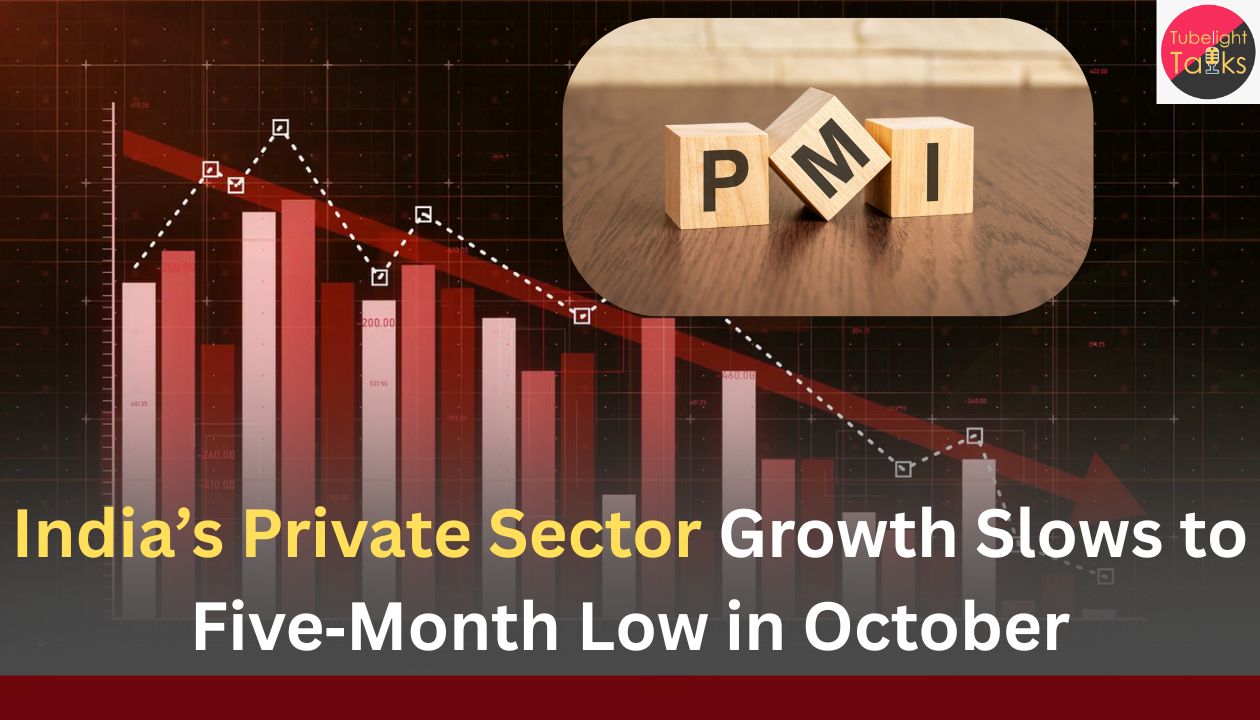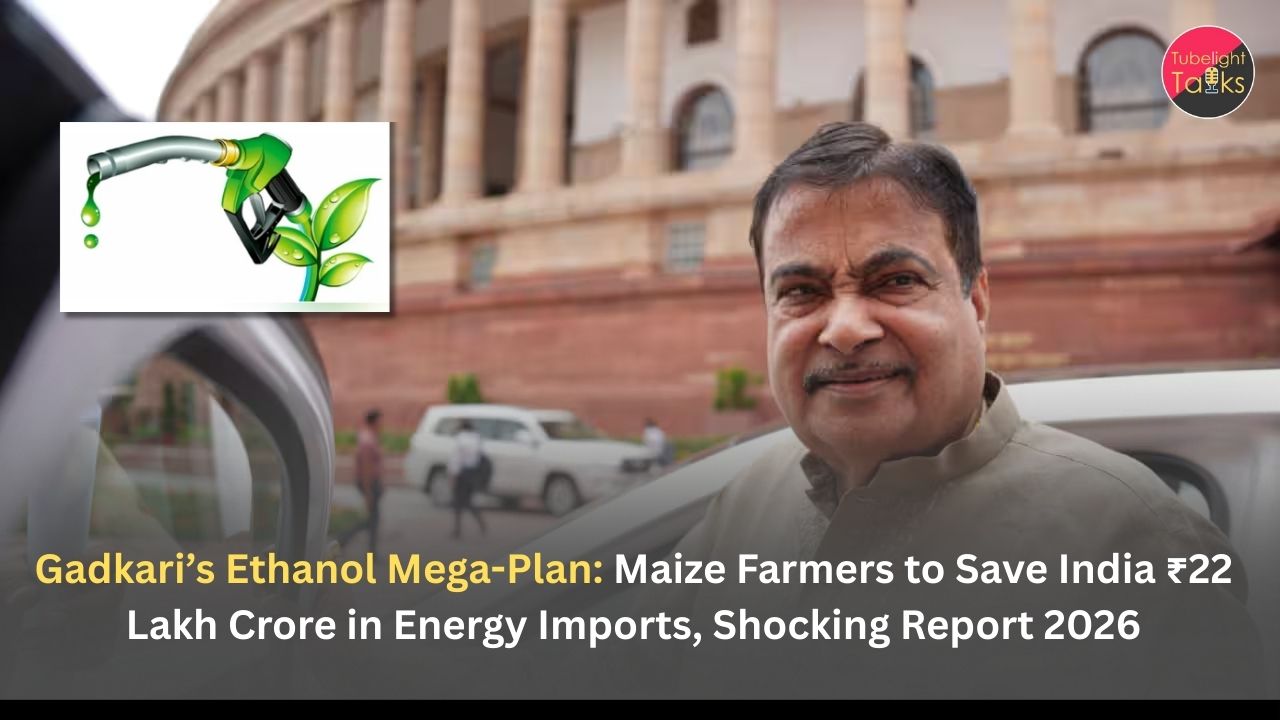India’s Private Sector Growth moderated significantly in October 2025, with the flash composite Purchasing Managers’ Index (PMI) — compiled by HSBC and S&P Global — declining to 59.9 from 61.0 in September. Despite remaining well above the 50‑point threshold that separates expansion from contraction, the reading marked the slowest growth rate since May of this year.
What the Data Shows

Composite Output & Sectoral Divergence
The compressed pace was largely driven by a slowdown in the services sector, whose business‑activity index fell to 58.8 (from 60.9). Meanwhile, manufacturing registered a modest uptick, with its output index rising to 58.4 from 57.7.
New Orders, Exports & Employment
Although new orders still expanded, they did so at the weakest rate since May. Export growth also decelerated to the slowest in seven months amid tariffs and weak global demand. Employment growth in the private sector held steady but remained at one of its lowest levels since April 2024.
Input Costs & Selling Prices
Cost pressures eased somewhat — input prices rose at the slowest pace since June — but companies passed higher costs to customers, accelerating selling‑price inflation. The GST rate cut helped domestically but could not fully offset external headwinds.
Underlying Drivers
Global Trade and Export Demand
The slowdown in new export orders reflects rising trade tensions (especially U.S. tariffs) and softening international demand for Indian goods and services.
Services Sector Drag
The services economy — a key driver of jobs and growth in India — faced slower volumes, likely impacted by tougher competition, disruptive weather events (e.g., floods), and weaker international engagements.
Manufacturing Holding Up
The modest rebound in manufacturing may be linked to domestic stimulus (e.g., GST cuts) and stronger local demand, offering a silver lining amid the broader slowdown.
Implications for the Economy
Growth Momentum
While growth remains solid, the moderation suggests India’s growth momentum may face headwinds unless services rebound and export demand picks up.
Policy Outlook
Monetary and fiscal policymakers may need to monitor service‑sector conditions and export performance closely. The Reserve Bank of India could recalibrate policy if momentum weakens further.
Business Sentiment
Eroding business optimism — expressed in the survey — may affect investment plans and hiring over the coming quarters. Firms cited competitive pressures and market‑uncertainty as reasons for caution.
Also Read: IMF Upgrades India Growth 2025-26 Outlook Amid Global Economic Challenges
Re-examine Perspective on Growth & Sustained Development
According to the teachings of Sant Rampal Ji Maharaj, real progress is not merely reflected in high numbers or growth rates, but in ethical upliftment, balanced development and service to humanity. From a satgyan viewpoint, the slowdown in growth provides an opportunity for India to re‑examine whether its growth model is inclusive, sustainable and aligned with moral purpose — not just rapid outputs or exports. Growth that neglects social‑well‑being or resilience to disruption may not lead to true advancement.
What to Watch Going Forward
Services Revival
Will services activity pick up in subsequent months? A sustained recovery in this segment is crucial for overall growth.
Export Demand Recovery
Monitoring export‑orders, global tariff‑policy changes and trade outcomes will be key to seeing if the drag on growth eases.
Investment & Hiring Trends
As business sentiment weakens, tracking capex announcements and employment data becomes critical for assessing near‑term trajectory.
FAQs: India’s Private Sector Growth in October 2025
Q1. What was the composite PMI reading for India in October?
59.9, down from 61.0 in September.
Q2. Which sector led the slowdown?
The services sector, with its business‑activity index falling to 58.8 from 60.9.
Q3. Does this reading mean India is in recession?
No — a PMI above 50 still indicates expansion. However, the slower pace signals reduced momentum.
Q4. What external factors are affecting growth?
Global export demand weakness and U.S. tariff pressures are contributing to the slowdown.
Q5. Why is this relevant for policy makers?
Because slower growth in services and exports could affect jobs, investment and future growth potential — warranting careful policy monitoring.










